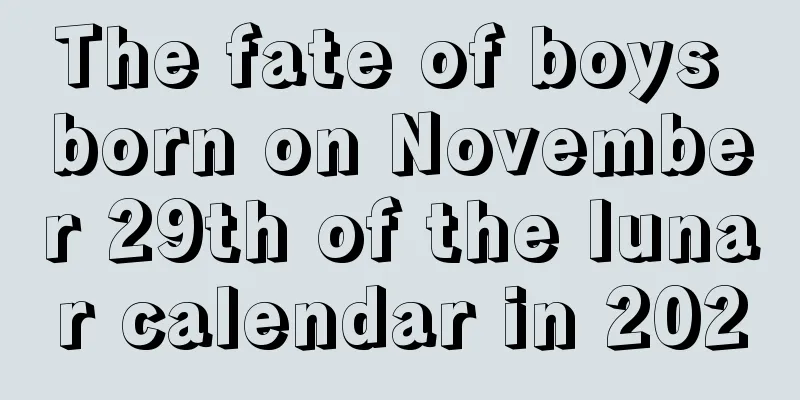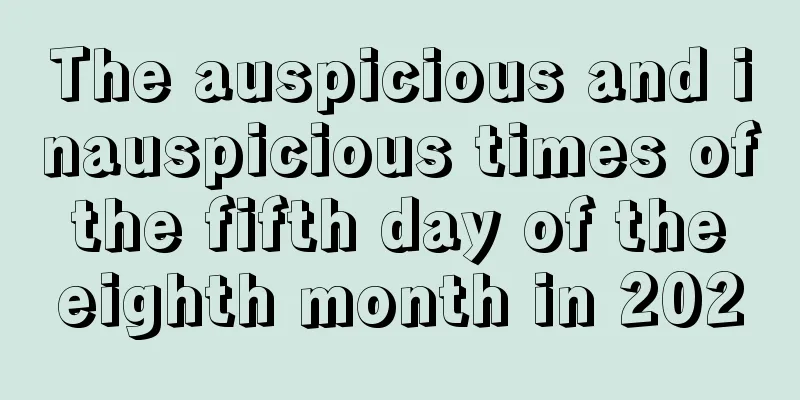What is a leap month? What is the origin of the leap month of June?

Introduction: Our country's traditional lunar calendar is one of the important timekeeping calendars, and the leap month is one of the special adjustment methods of this calendar. So what is a leap month of June? What is the origin of the leap month of June? Let’s follow the editor to learn more about it. The arrival of the sixth lunar month indicates that the scorching summer mode has begun. As for the auspiciousness and inauspiciousness of more days in the sixth lunar month, follow the editor to learn more about it!What is a leap month?The month without the solar term is defined as a "leap month" in the calendar, also called "leap month". If the leap month comes after June, it is a leap June.Leap June is a common leap month (but not unchangeable. Over time, the frequency of leap June will gradually decrease from the highest level). It usually occurs once every 19 years (such as in 1960 and 1979), sometimes once every 38 years (such as in 1835 and 1873), and sometimes occurs once every 19 years but less than 38 years (such as in 1987 and 2017, 30 years apart, and 2810 and 2837, 27 years apart). The shortest interval is once every 8 years (such as in 2017 and 2025) or 11 years (such as in 2025 and 2036). Its frequency of occurrence is second only to the leap May. Some years with a leap June are the latest years for the Chinese Valentine's Day, the Ghost Festival and the Mid-Autumn Festival. The origin of the leap month of June:In order to keep the lunar calendar synchronized with the tropical year of the Gregorian calendar (solar calendar), the ancients adopted the method of setting leap months.There are 24 solar terms in the ancient calendar, which are divided into solar terms and Zhongqi. There are two solar terms in each lunar month. The beginning of the month is called the solar term, and the middle of the month is called the middle term. "For example, the Beginning of Spring is the solar term of the first month, and Rain Water is the middle term of the first month." The average length of the two solar terms in the Gregorian calendar is 30.5 days, while each month in the lunar calendar is only 29.5 days, a difference of 1 day. Therefore, the solar term of each month will be 1-2 days later than the previous month. If this continues, there will always be a month with only solar terms but no central solar terms. During the year, the distance between the earth and the sun sometimes gets closer and sometimes gets farther. When the Earth is far away from the Sun, which is around June in the Gregorian calendar, its movement is slow, so the interval between two solar terms is long, and the longest can exceed 31 days. Based on the previous average length of 30.5 days, there is a high possibility that there will be no solar term in the month, and the possibility of a leap month is also high. Therefore, there are more chances of leap April, leap May and leap June. Around December of the Gregorian calendar, the earth moves fast and the intervals between solar terms are short, with the shortest being just over 29 days, which is shorter than a lunar month. Therefore, it is unlikely that there will be no solar terms in the first, eleventh and twelfth months of the lunar calendar. Relatively speaking, leap months occur less frequently. Summary: Through the above article, we know the analysis about the leap month of June. I hope that everyone will have a certain understanding of leap months and leap June. I hope you will like it! |
<<: What is a leap month? How often does a leap June occur?
>>: What is a leap month? What are the customs of leap June?
Recommend
What are the do's and don'ts on the 29th day of the seventh lunar month in 2019? God of Wealth of the Day
The things that are desirable in life need to be ...
Is the 2019 Ghost Festival a good time? Are there any taboos during the Ghost Festival?
The Zhongyuan Festival is also called the "Gh...
Feng Shui Story: The Feng Shui Theory of Zhu Di, Emperor Chengzu of Ming Dynasty, Moving the Capital
We all know that Beijing became the imperial capit...
Is the Beginning of Winter 2021 an auspicious day? What is the exact time?
The Beginning of Winter, the Beginning of Spring, ...
Is the Children's Day on May 3rd in 2022 a good date? Is it an auspicious day?
The fifth month of the lunar calendar has arrived....
Isn’t the 24th day of the 10th lunar month in 2017 a good day for offering sacrifices?
Introduction: The tenth month of the lunar calenda...
The fate of a baby boy born on January 24, 2022
Many babies are born every day. The baby's for...
Is it not appropriate to get engaged on the Double Ninth Festival in September 2020? What is not popular to eat before and after the Double Ninth Festival?
Introduction: Generally, an auspicious day is requ...
Should we welcome the God of Wealth on the tenth day of the Lunar New Year in 2021? What's the point?
If 2021 is a brand new chapter, then the first mon...
What does "See Three New Things During Grain Full" mean? What time does Grain Full begin in 2019?
Introduction: Xiaoman is one of the 24 solar terms...
Query the position of the God of Happiness on the 20th day of the seventh lunar month in 2019, and the hexagram of the day
There are many gods in Chinese culture, and today...
What is the zodiac sign for people born on the beginning of spring? What are the twelve zodiac signs?
The Beginning of Spring is the first of the 24 sol...
Is it a good time to pick up a car on the 22nd day of the twelfth lunar month in 2020? What season does the beginning of spring represent?
Introduction: It is generally necessary to choose ...
Is Qingming Festival 2019 suitable for signing contracts? Is Qingming Festival in 2019 a good time?
Is Qingming Festival 2019 suitable for signing con...
Is it good for a girl born on the fourth day of the first lunar month, January 28, 2020?
Is it good for a girl born on the fourth day of th...









